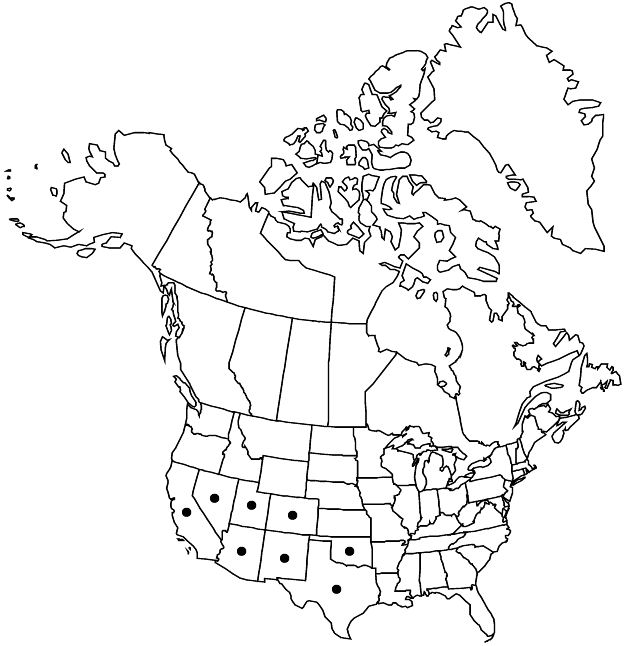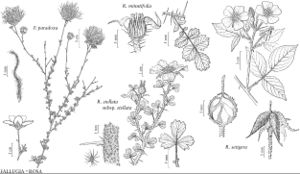Difference between revisions of "Fallugia paradoxa"
in W. H. Emory, Not. Milit. Reconn., 139. 1848.
FNA>Volume Importer |
imported>Volume Importer |
||
| Line 64: | Line 64: | ||
|publication year=1848 | |publication year=1848 | ||
|special status=Illustrated | |special status=Illustrated | ||
| − | |source xml=https:// | + | |source xml=https://bibilujan@bitbucket.org/aafc-mbb/fna-data-curation.git/src/bb6b7e3a7de7d3b7888a1ad48c7fd8f5c722d8d6/coarse_grained_fna_xml/V9/V9_110.xml |
|subfamily=Rosaceae subfam. Rosoideae | |subfamily=Rosaceae subfam. Rosoideae | ||
|tribe=Rosaceae tribe Colurieae | |tribe=Rosaceae tribe Colurieae | ||
Revision as of 00:25, 28 May 2020
Stems: long-shoot internodes 2.5–10(–15) mm, those proximal to flowers 15–30(–50) mm; short-shoot spurs 1–3.5(–7) mm. Leaves: long-shoot leaf bases 1.5–4.5 mm, short-shoot leaf bases much reduced; stipules 1–2 mm; blade (4–)7–18(–30) × (0.8–)3–12(–23) mm, lobes 3–7, linear-lanceolate, 1–7(–13) × 0.7–1.4(–2.2) mm. Flowers: epicalyx bractlets leaflike, subulate to linear, 2–5(–8) mm, margins entire or apically 2–3-toothed; hypanthium 2.5–3.5 × (4–)5–6(–7) mm; sepals (3.2–)4–8(–10) × 2.2–5(–6.5) mm, subterminal leafy apiculations 1(–3), terminal, linear-subulate, 1–3, 1–2.5(–3.5) mm; petals (6–)10–18(–21) × (6–)7–14(–17) mm, ± larger in staminate flowers; staminate flower filaments 2.2–4.3 mm, anthers 0.7–1.2 mm; pistillate flower filaments 1.5–2.5 mm, anthers 0.3–0.4 mm (sterile); stigmas terminal. Achenes 2-veined; styles ± curved, 2.5–5 cm, hairs straight, spreading-ascending, white to purplish. 2n = 28.
Phenology: Flowering Apr–Oct.
Habitat: Desert scrub in sandy to rocky (rarely clay) drainages, or sandy-loamy to rocky uplands in grasslands, chaparral, pinyon-oak, juniper, or ponderosa pine woodlands
Elevation: (200–)700–2800 m
Distribution

Ariz., Calif., Colo., Nev., N.Mex., Okla., Tex., Utah, Mexico (Baja California, Chihuahua, Coahuila, Durango, Zacatecas).
Discussion
Fallugia paradoxa grows in diverse habitats, ranging from the Chihuahuan, Great Basin, and Mojave Desert scrub to woodlands. Throughout its range, plants exhibit considerable variation in underground structures, and lobing and indument of leaves, bracts, and epicalyx. In sandy drainages, it is commonly rhizomatous and colonial, especially in California. In upland sites, it is not rhizomatous. Lobing of sepal tips and epicalyx bracts shows considerable variation on individuals and to some extent regionally. Lobes are more consistently found in plants from Texas and northern Mexico.
Selected References
None.
